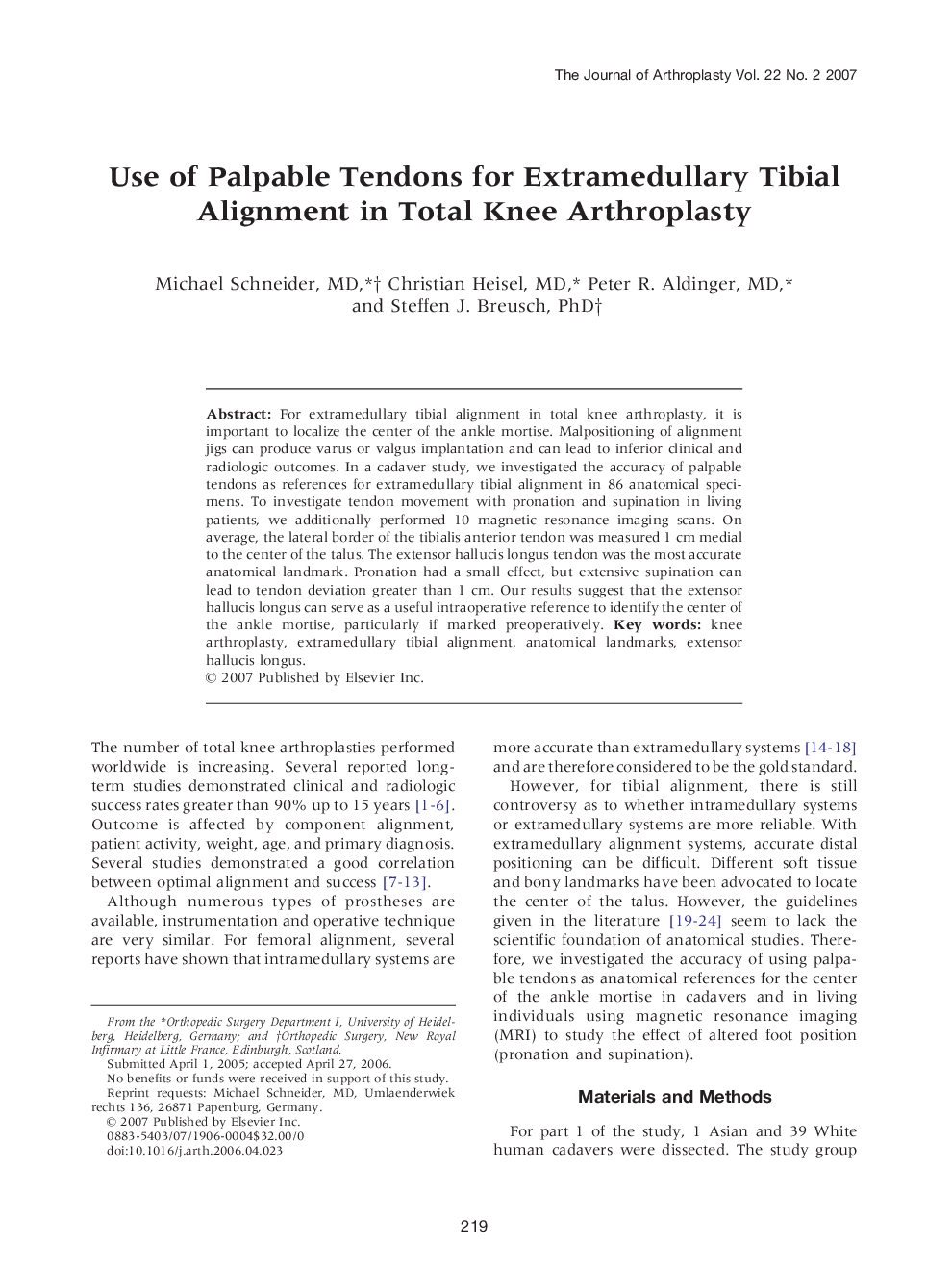| کد مقاله | کد نشریه | سال انتشار | مقاله انگلیسی | نسخه تمام متن |
|---|---|---|---|---|
| 4062585 | 1604078 | 2007 | 8 صفحه PDF | دانلود رایگان |

For extramedullary tibial alignment in total knee arthroplasty, it is important to localize the center of the ankle mortise. Malpositioning of alignment jigs can produce varus or valgus implantation and can lead to inferior clinical and radiologic outcomes. In a cadaver study, we investigated the accuracy of palpable tendons as references for extramedullary tibial alignment in 86 anatomical specimens. To investigate tendon movement with pronation and supination in living patients, we additionally performed 10 magnetic resonance imaging scans. On average, the lateral border of the tibialis anterior tendon was measured 1 cm medial to the center of the talus. The extensor hallucis longus tendon was the most accurate anatomical landmark. Pronation had a small effect, but extensive supination can lead to tendon deviation greater than 1 cm. Our results suggest that the extensor hallucis longus can serve as a useful intraoperative reference to identify the center of the ankle mortise, particularly if marked preoperatively.
Journal: The Journal of Arthroplasty - Volume 22, Issue 2, February 2007, Pages 219–226